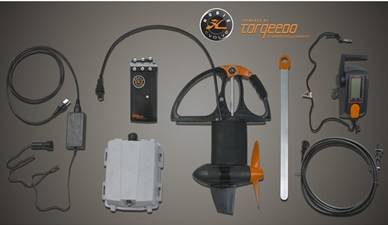Alcohol and fuel cells in our future?

Neah Power, a Seattle-based company, is finding widespread interest in its portable fuel cells. Some of the company's past research and development was paid for by the Pentagon. The Navy has been especially eager to see Neah's technology developed. The Neah fuel cells can operate in anaerobic conditions. No air. Can't do that with gasoline, diesel or even traditional fuel cells.
Other early money for Neah came from Novellus and Intel. The power for portable gear is very attractive to corporations making all manner of remote or portable equipment.
I recently spoke with Neah's CEO, Chris D'Couto, who's got a PhD in chemical engineering and an MBA. Right combo, because Neah has a number of chemical processes they intend to patent. And they're building and selling fuel cells that use methanol for fuel. No Kevlar-reinforced cylinders full of liquid hydrogen. Just simple plastic cartridges with methanol inside. For portable uses, no expensive and heavy lithium-ion batteries with their concomitant ability of exploding on a ship or plane. Just plastic cylinders of methanol. Neah's goal: better power through chemistry.
D'Couto sees Neah's tech becoming common across many parts of the economy. The military needs to get those heavy batteries out of the foot soldier's backpack, and out of ships at sea or airplanes overhead. Neah fuel cells can help run digital technology in remote areas where there's no electrical grid. Campers, hikers, boaters will use it for many purposes. Already Neah and Hobie are teamed making electrically-powered kayaks.
D'Couto sees easy acceptance of the Neah fuel cells. Methanol is already widely produced and available in the U.S. It is much easier to handle and safer than liquified hydrogen. The chemistry: methanol is CH3OH. When it burns in the fuel cell it produces water, carbon dioxide and a spare electron. That's the electricity. Neah has developed super-efficient fuel cells, says D'Couto. Neah claims efficiency as much as 2.5 times as great as the traditional fuel cells using pure hydrogen and requiring an constant air supply.
The Neah fuel cells use only miniscule amounts of gold or platinum, the necessary catalysts for breaking down the methane and freeing the hydrogen which gets burned in the fuel cell. D'Couto says they can get down to sub-micron thickness of gold and platinum in their fuel cell design. Important because those metals are expensive. That's why they are classed as "precious."
And there'll be no need for building large, new infrastructure to build the cartridges or other components. Neah will hire existing computer chip fabrication plants to create the necessary catalyst parts for its fuel cells. No capital expenditure, no ramp up.